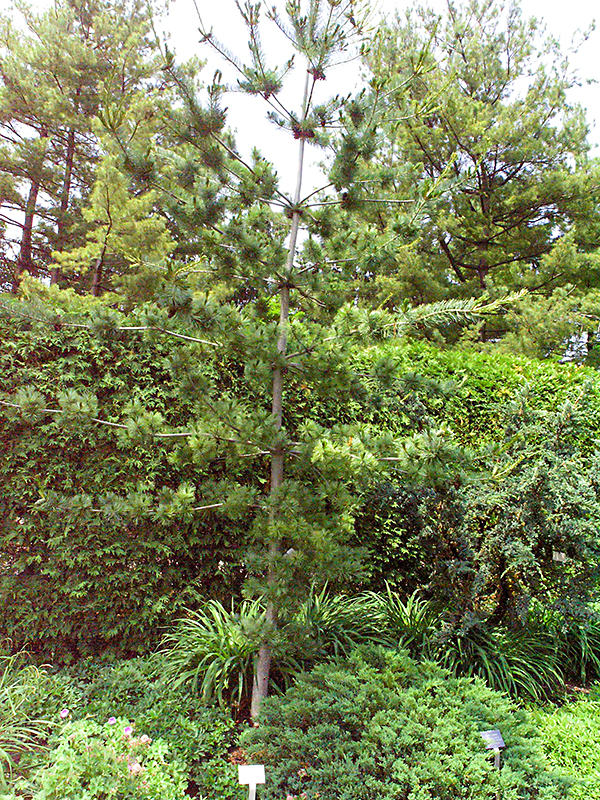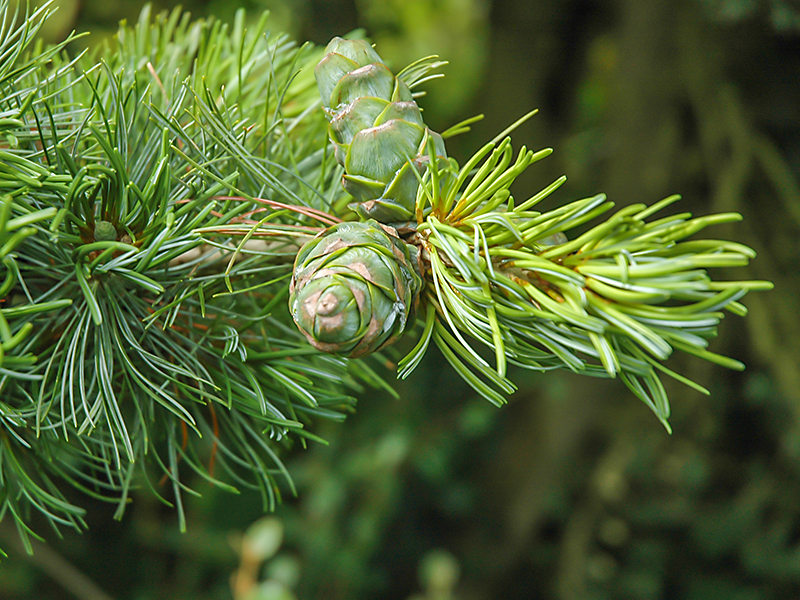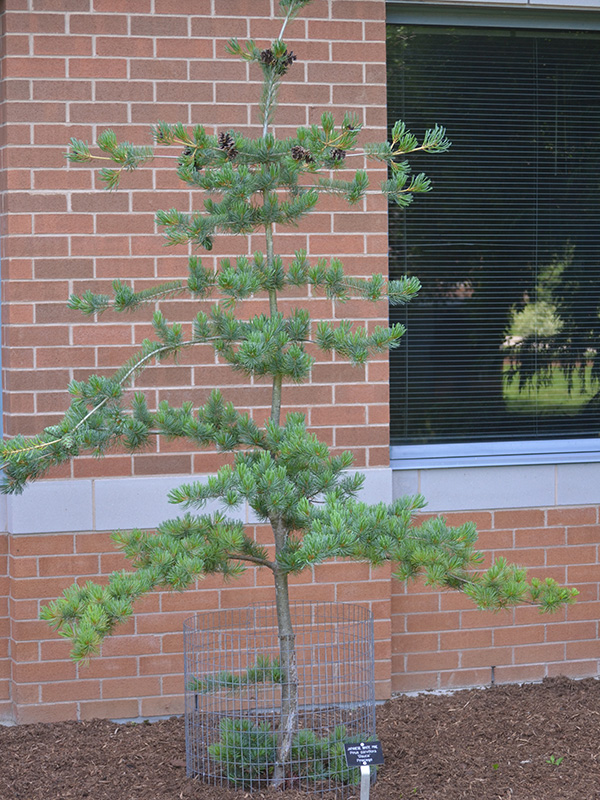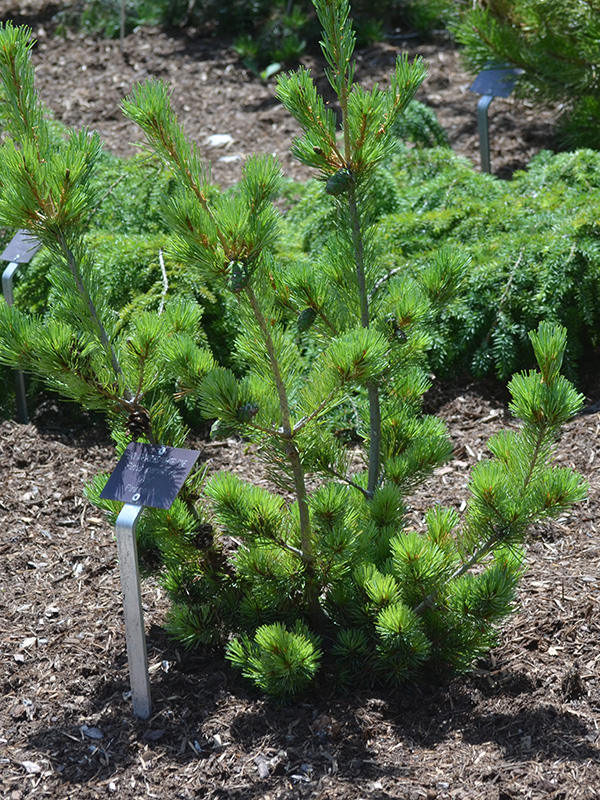
Woody > Pinus > Pinus parviflora > Pinus parviflora
Pinus parviflora
Japanese White Pine
Mike's
Opinion


"
Small graceful looking tree that develops a flat topped spreading crown. As with Pinus aristata, Pinus parviflora is a plant for the connoisseur and is rarely found in the more common gardens.
Michael Pascoe, NDP., ODH., CLT., MSc. (Plant Conservation)
"
| Family |
| Pinaceae |
| Genus |
| Pinus |
| Species |
| parviflora |
| Category |
| Woody |
| Type |
| Tree (evergreen) |
| Pronunciation |
| USDA Hardiness Zone |
| 5 - 7 |
| Canadian Hardiness Zone |
| 4a - 7a |
| RHS Hardiness Zone |
| H5 - H7 |
| Temperature (°C) |
| -29 -(-12) |
| Temperature (°F) |
| -20 - 10 |
| Height |
| 9 - 15 m |
| Spread |
| 9 - 15 m |
Photographs
Description and Growing Information
Flowering Period
| General Description |
| Small graceful looking tree that develops a flat topped, spreading crown, reaches heights of 20 m in the landscape. |
| Landscape |
| Ideal for small residences because of its limited size, looks great in groups of 3 or 5, useful in coast gardens because of its salt tolerance. |
| Cultivation |
| Thrives in a light well-drained sandy or gravel soil. Dislikes poorly drained or moorland type soils. |
| Shape |
| Broadly columnar; wide spreading branches; dense in youth; becomes flat topped with age. |
| Growth |
| Slow |
| ID Characteristic |
| This is a picturesque shrub (good for bonsai) or small tree, conical in shape when young, with deep blue-green foliage. Commonly grown in Japanese gardens. |
| Habitat |
| The plant prefers light (sandy) and medium (loamy) soils that are well-drained. |
| Bark/Stem Description |
| Bark is very thin and can be easily damaged. Dark brownish in colour. |
| Leaf Description |
| Needles are in a fascicle of 5, bluish-green, slightly curved, 2-8 cm long, 0.7-1 mm wide, with 3-6 prominent white stomatic lines beneath. |
| Flower Description |
| The flowers are monoecious with both sexes found on the same plant and are pollinated by wind. |
| Fruit Description |
| Fruit shape is oval, 7.5-15 cm long and are brownish red colour. |
| Colour Description |
| Blue-green foliage. |
| Texture Description |
| Fine textured. |
| Notable Specimens |
| The Gardens of Fanshawe College, London, Ontario, Canada. |
| Propagation |
| It is best to sow the seed in individual pots in a cold frame as soon as it is ripe. |






